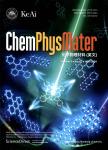When starvation therapy meets chemodynamic therapy
作者机构:Marshall Laboratory of Biomedical EngineeringInternational Cancer CenterLaboratory of Evolutionary Theranostics(LET)School of Biomedical EngineeringHealth Science CenterShenzhen UniversityShenzhen 518060China
出 版 物:《ChemPhysMater》 (化学物理材料(英文))
年 卷 期:2022年第1卷第4期
页 面:264-280页
学科分类:1002[医学-临床医学] 100214[医学-肿瘤学] 10[医学]
基 金:supported by the National Key R&D Program of China(2018YFA0704000) Basic Research Program of Shenzhen(JCYJ20200109105620482,JCYJ20180507182413022,JCYJ20210324093815040) National Natural Science Foundation of China(21807074,8207198) Shenzhen Science and Technology Program(KQTD20190929172538530)
主 题:Starvation therapy Chemodynamic therapy Glucose oxidase Reactive oxygen species Cancer
摘 要:In recent years,starvation-primed chemodynamic therapies(ST-CDT)have become a hot topic in the wake of many discoveries related to the aberrant metabolism of cancer cells and their resistance to traditional chemother-apies,as well as altered redox signaling within tumor *** platforms are in a unique position to exploit these interrelated phenomena to realize a therapeutic effect;few therapeutic modalities are able to deliver multiple drugs simultaneously outside of nanotechnology,a basic requirement when striving to exploit a complex,interactive system such as a cancer *** this review,the pertinent mechanisms of ST and CDT,as well as the important interactions between these two therapies,are *** outline how these therapies may work synergistically or antagonistically,depending on both the therapeutic design and the system of reactions ***,specific applications that nanotechnology is particularly well-suited are given,which may offer improvement over clinical *** considerations are important,as nanotechnology has historically encountered great difficulty in clinical translation.



